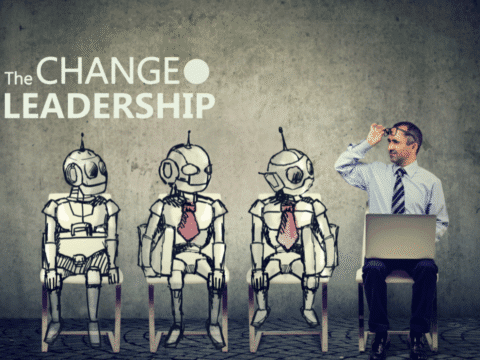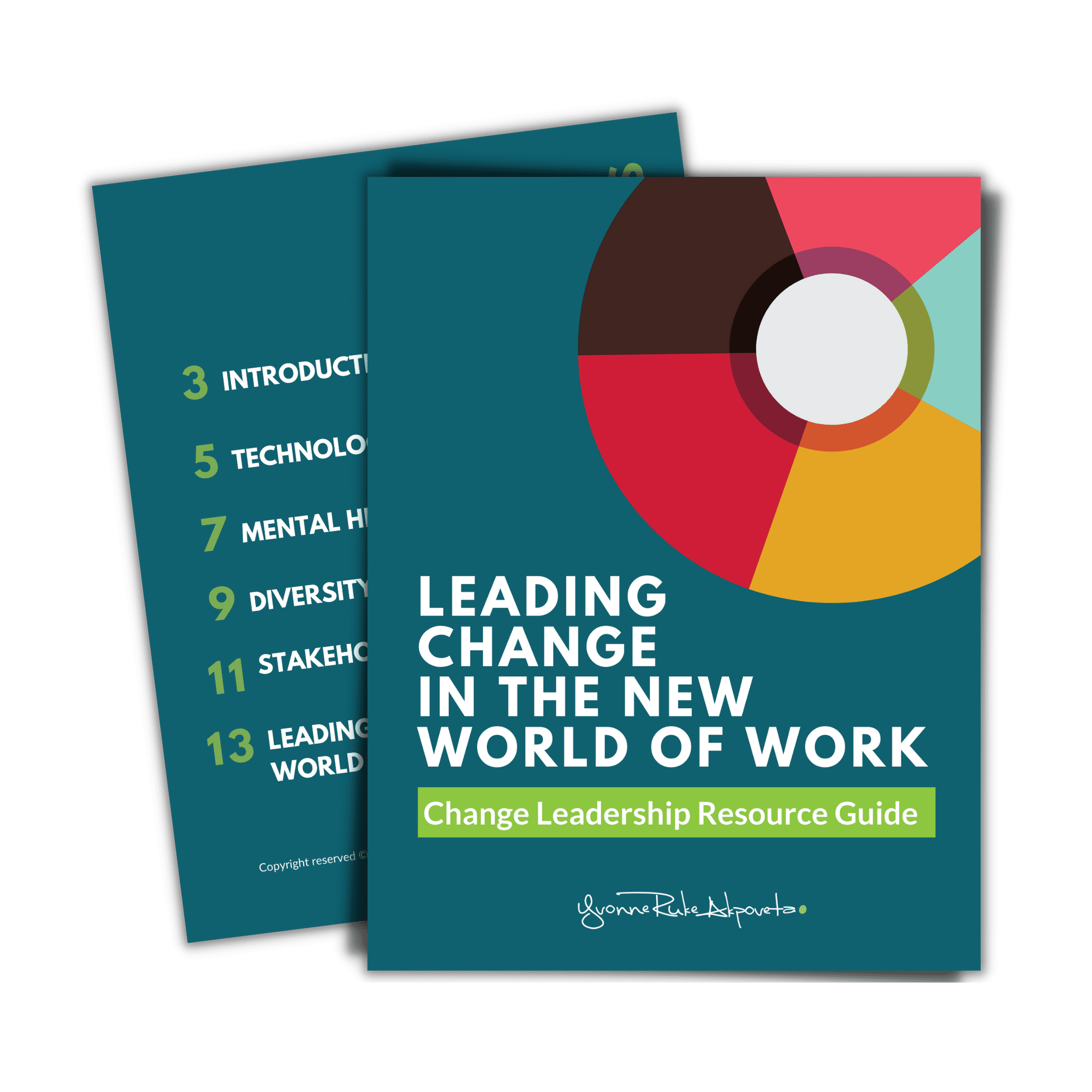Career Strategies for Change Leaders: Navigating Growth and Overcoming Challenges
Career Strategies for Change Leaders: Navigating Growth and Overcoming Challenges

As the pace of change accelerates, the role of change leaders has become increasingly critical for organizational success. However, charting a fulfilling career path in this dynamic field requires navigating various challenges and proactively developing key skills. During our recent VIP Career Mastermind for Change Leaders, we explored insights from experienced change management leaders and professionals on how to continue to build a successful career, as well as overcome some common challenges.
Embracing an Intrapreneurial/Entrepreneurial Mindset
Many successful change leaders, like Isolde Kanikani, have an entrepreneurial background that has served them well. Adopting this mindset means being proactive, identifying problems, and proposing solutions. This involves constantly scanning the organization for areas that could benefit from change and then positioning yourself as a valuable partner in driving that change.
Jeremy Schmidt, who manages a team of change management consultants, shared how he transitioned from a financial advisor to leading a team by addressing critical organizational challenges and pitching solutions to senior leadership. By identifying a problem that the executive team was not yet aware of and proposing a solution, Jeremy positioned himself as a strategic partner. This allowed him to gain visibility and credibility, ultimately leading to a dedicated change management role. As change leaders progress in their careers, the ability to influence beyond their immediate team becomes paramount.
Host, Yvonne Ruke Akpoveta highlighted the importance of an “intrapreneurial mindset” for change leaders, drawing from Jeremy’s example, Yvonne said: “…there’s entrepreneurial skills, but within organizations, you have what is called intrapreneurial skills—finding that problem, finding that solution.” Yvonne explained that Jeremy was able to position himself as a problem solver and strategic partner by:
- Proactively identifying a critical organizational challenge
- Proposing a solution to address that challenge.
- Presenting his ideas to the executive team.
This allowed Jeremy to gain visibility, credibility, and ultimately transition into a dedicated change management role. Yvonne emphasized that this intrapreneurial mindset – of being proactive, identifying problems, and proposing solutions – is a key skill for change leaders to develop, even within the constraints of an organization.
By adopting this mindset, change leaders can demonstrate their value, expand their sphere of influence, and position themselves for growth and advancement, similar to how an entrepreneur would operate in a startup environment.
Key Trends for Change Leaders
Isolde identified the following key trends that change leaders should be aware of:
- ESG (Environment, Social, Governance): ESG is a trend that is particularly hot in Europe right now due to new legislation, but it is also a global trend that organizations are grappling with.
- AI (Artificial Intelligence): She noted that AI is a fascinating topic with a lot of implications for change management. She emphasized the importance of breaking down AI into different capabilities, rather than viewing it as a single “big monster” that is hard to engage with.
- Speed of Change: She shared that the speed of change is a key trend, and that rather than always looking for the “next big thing”, change leaders should also take the time to deeply understand and build skills in areas they may have gaps in.
AI is reshaping the change management field, and Isolde highlighted its increasing significance. She explained that AI agents can orchestrate actions, make decisions, and potentially replace certain manual tasks, making it essential for change leaders to stay informed and adapt. Understanding AI capabilities and their implications is crucial for staying ahead in the profession.
Overcoming Key Challenges
During breakout sessions, participants discussed career challenges, milestones, and successes, weaving together personal experiences with emerging trends. This dialogue reinforced the need for continuous learning and strategic thinking in an evolving business environment.

Capture of speakers and some participants of the VIP Career Networking Event
Expanding Influence & Leading Change
Selling Change and Gaining Buy-In
One of the biggest challenges change leaders can face in their organization is securing leadership buy-in and resources for change management.
On overcoming the challenge of positioning the value of Change Management in our organizations, Siobhan Calderbank shared “It’s kind of like being a salesperson. You have to be able to go in there and explain why—why do I need to be here? What are the things I have to do, and how am I going to get it done? And what’s going to happen if (as change manager) I’m not part of this right, which is kind of like sales.”
She emphasized that people with an entrepreneurial spirit who know how to effectively “sell” the value of change management are the ones who are most successful in getting a seat at the table.
Yvonne also emphasized the importance of demonstrating tangible value through successful projects. By showcasing the value that change management brings and the impact it can have, change leaders can become advocates within the organization, with stakeholders actively requesting their involvement.
Three key points Jeremy’s adviced on were:
- Always keep your audience in mind when communicating the value of change management.
- Understand what is important to and what the priorities are for the specific leader or executive you are speaking with.
- Tailor your messaging and approach to resonate with their interests and needs.
Lead with Small Change Management teams:
Empowering Teams & Navigating Limited Organizational Resources
A common challenge faced by change leaders, especially those in smaller teams within large organizations, is the need to scale their impact. Isolde shared strategies for overcoming this, such as creating change management frameworks, toolkits, and training programs that can be leveraged by non-change managers to lead and navigate changes.
She also discussed the importance of elevating the change management function from a tactical to a strategic level. Strategies include empowering other team members, demonstrating value through measurable outcomes, and actively involving sponsors to advocate for change initiatives.
Yvonne reiterated the following key points:
- Develop a center of excellence or repository of change management tools and templates.
- Ensure the tools are user-friendly and easy for non-change managers to adopt.
- Provide change leadership training to build change skills and mindsets across the organization.
By empowering others with the right resources and knowledge, the change management team can amplify their impact and drive sustainable transformation, even with limited resources.
Communication Challenges
Effective Strategies for reaching impacted stakeholders
Communicating especially in a culture of information overload, or where the audience is large and dispersed can be a challenge. Here are some of the strategies shared.
- Leverage a Change Champion Network: Participants discussed the approach of identifying change champions or advocates within each segment or department, and using them to cascade messages and support the change process. This helps reach a wider audience through a distributed network.
- Utilize Diverse Communication Channels: The group suggested using a variety of communication tools, such as:
-
- Podcasts – Both short, informational podcasts as well as longer, deeper-dive discussions
- Spotlight demos and videos to showcase changes and get feedback
- Town halls and “mini commercials” played before town halls
The key was to use multiple channels to reach people in their preferred formats and learning styles.
- Implement Drop-in Clinics: Where employees could come with questions and get support. This helps build a support network, capture FAQs, and continue to reinforce key messages.
- Measure and Iterate: Participants emphasized the importance of measuring the effectiveness of communication efforts and iterating based on feedback. Tracking things like engagement levels can help refine the approach over time.
The overall theme was about using a multi-pronged, creative communication strategy to reach a large, dispersed audience, rather than relying on a single method. Leveraging change champions, diverse channels, and interactive forums were seen as effective ways to scale change communications.
Staying Competitive in the Market
Yvonne asked the speakers to share one thing they would recommend for change leaders to stay ahead and remain competitive in the market, the speakers provided the following advice:
Siobhan: “Pay attention to the trends, particularly look at job postings and see what are the skills and competencies that are being added. That’s where you know you need to be starting up, whether it’s AI, digitization, transformation, technology, or project management. Pay attention to those trends and then start building up your skills and your toolbox.”
Jeremy: “Continue to have a growth mindset. Continue to develop yourself constantly. If you ever get to a point where you think you’ve got this all figured out, you’re probably a little bit naive about that. Just keep being curious, keep looking at industry trends, keep learning.”
Isolde: “Let’s not get into the box of what we think a change manager is and does, but really understanding that you can do change management from any role. And then also couple that with your own individual passion and capabilities where you want to grow.”
To stay ahead in a rapidly evolving field, change leaders must embrace continuous learning and innovative communication strategies. By embracing an entrepreneurial spirit, leveraging AI, expanding influence, empowering teams, and demonstrating the value of change management, professionals can navigate their careers with greater purpose and impact. Staying curious, adapting to emerging trends, and building cross-functional expertise are also essential for maintaining a competitive edge in the profession.
The insights shared in this discussion provide a roadmap for change professionals to develop their skills and lead their organizations through complex transformations.
Are you a change leader interested in creating your own Practical Playbook for Leading Change? Click HERE to join industry experts and change leaders in gaining actionable strategies, insights, and tools to success!
Need Change Leadership Training, check on our Change Leadership Accelerator Course.

Yvonne is a Change Management Strategist, Catalyst and Change Leadership Advocate who is passionate about working with professionals and organizations to help them to successfully lead change. You can learn more about Yvonne at: www.yvonnerukeakpoveta.com, and also connect with her on LinkedIn, Facebook, Twitter and Instagram.




